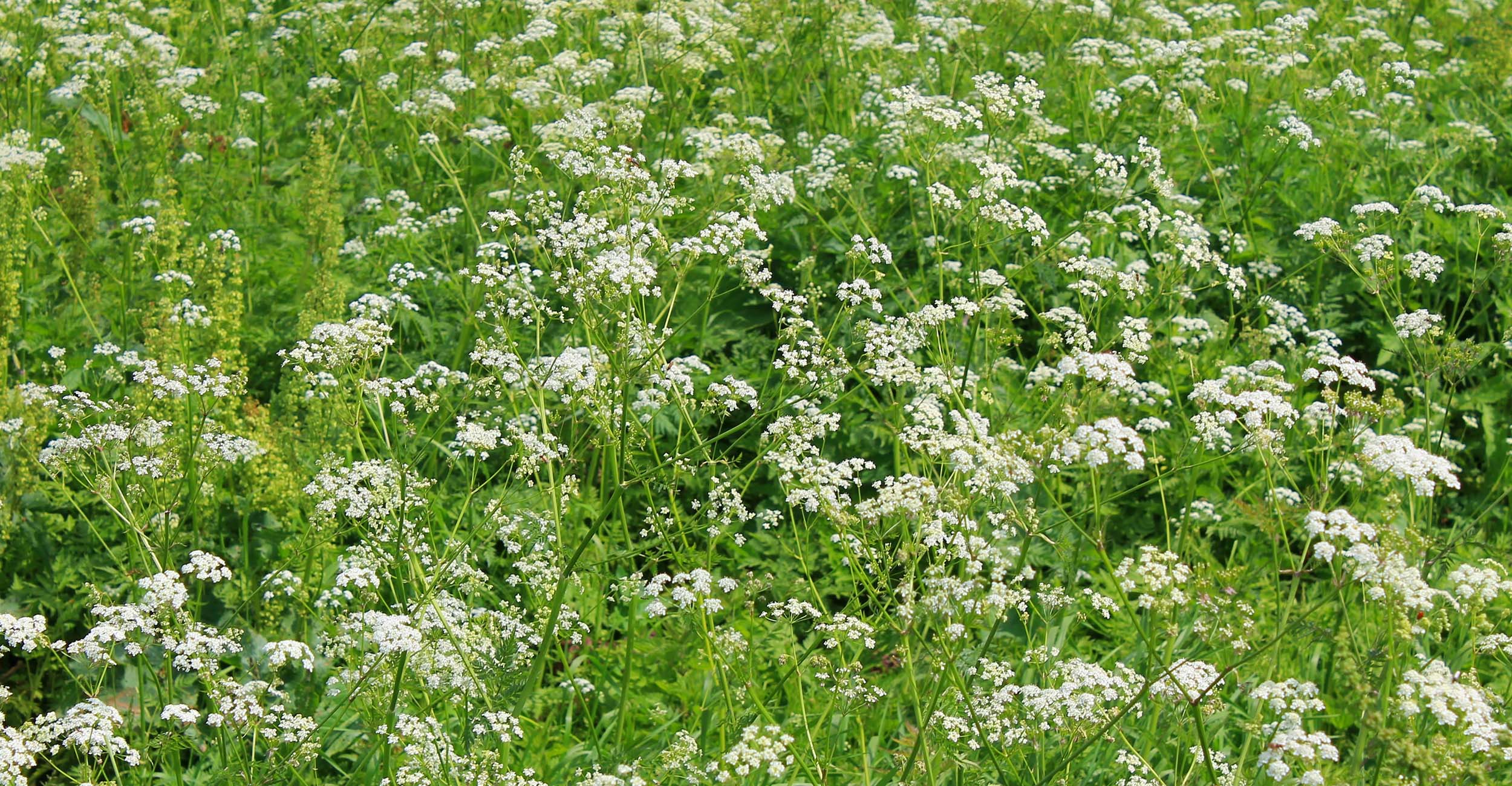
Agricultural News
Use Caution with Poison Hemlock, Ivy and Oak
Tue, 21 Jun 2022 11:45:52 CDT
 Flowers are blooming and vegetables are ripe for picking out of the garden, but unfortunately, poison hemlock and other toxic plants are also blooming across the state.
Flowers are blooming and vegetables are ripe for picking out of the garden, but unfortunately, poison hemlock and other toxic plants are also blooming across the state.
Poison hemlock is one of the most toxic plants found in Oklahoma, excluding the Panhandle, said Laura Goodman, Oklahoma State University Extension range specialist.
"Poison hemlock is toxic to many different livestock species. In fact, some livestock and wildlife that consume this plant can die within 20 minutes," Goodman said. "It doesn't take very much to harm livestock and wildlife. Less than 500 grams can kill an animal. It's also very toxic for humans. Simply touching the plant can make you sick."
Poison hemlock features white, umbrella shaped flower clusters with fern-like leaves. Goodman said you can tell poison hemlock apart from other white flowering plants because of its height, which can be 6 to 10 feet tall. Another distinguishing feature is the red spotting on the stem.
If livestock have ingested poison hemlock, farmers and ranchers may notice neurological symptoms, said Dr. Barry Whitworth, OSU Extension veterinarian and food animal quality and health specialist.
"Livestock that have ingested this plant will likely demonstrate nervous system issues, such as tremors, being uncoordinated and walking funny," Whitworth said. "They're going to hypersalivate and could also have abdominal pain. The toxins will depress the nervous system, which means muscles aren't going to function the way they're supposed to, including the diaphragm. This can result in suffocation."
Activated charcoal and vitamin K are treatments for poison hemlock toxicity. The charcoal absorbs the toxins and binds to the vitamin K to allow the animal to pass it.
"If we know an animal consumed poison hemlock, we can get it treated quickly. However, a farmer or rancher may not know the animal has ingested the toxic plant and will observe the symptoms later on."
As far as eradicating poison hemlock from a field or in a landscape, avoid touching it. Goodman said treating it with herbicide can make it more palatable to livestock.
"This obviously isn't a good treatment option if you've got livestock in the pasture, unless you can be sure to keep them away from it," she said. "The stalks on the plant can remain toxic for up to three years; therefore, removing all above-ground growth is best after you've done any kind of herbicide treatment."
One option after doing an herbicide spray is to do a controlled burn in the pasture. Goodman also suggests not using heavy stocking rates and rotational grazing systems that have high stock densities where livestock are forced to eat plants they don't want to eat.
"These are just a couple of ways to keep your livestock from accidentally eating this plant," she said.
Poison hemlock isn't the only harmful plant Oklahomans may encounter. Poison ivy and poison oak can also cause problems.
"Poison ivy can be found throughout Oklahoma but is less abundant in the southwest and panhandle areas," said Shelley Mitchell, OSU Extension associate specialist for youth horticulture programs. "Poison oak is mostly in coastal states but does occur in scattered locations across Oklahoma."
How can you tell if it's poison ivy or poison oak? It's not as simple as the old adage leaves of three, let it be. Knowing how to identify these plants can save a person from a miserable, red, itchy rash.
"Both poison ivy and poison oak contain an irritating, oily sap called urushiol, which causes many people to break out in a rash when they come into contact with it," Mitchell said.
Poison ivy leaves are compound and consist of three individual leaflets. Leaves vary from smooth to being lobed or pointed. Poison oak leaves are usually in clusters of three leaflets and the leaves are lobed or pointed with rounder edges.
Mitchell said poison ivy leaves start out shiny green, but as the summer progresses, they become a dull green. In the autumn, the leaves turn yellow or scarlet. Poison oak stays green throughout the summer, turning yellow with brown undertones in the fall.
"You can mow or weed eat these plants to remove them at ground level, but they'll resprout from the root. The oil from the plants will adhere to equipment and clothing, so be careful when dealing with these plants," she said. "When removing the plants from your landscape, be sure to wear proper clothing, including eye protection, gloves, long pants and long sleeves."
For those who do come in contact with the oil, immediately use rubbing alcohol, dishwashing liquid or a special soap made for use after contact with poison ivy or oak. Rinse thoroughly with cool water. Consult a physician if a rash appears.
OSU Extension offers more information about poison ivy and poison oak and their control methods.
OSU Extension uses research-based information to help all Oklahomans solve local issues and concerns, promote leadership and manage resources wisely throughout the state's 77 counties. Most information is available at little to no cost.
WebReadyTM Powered by WireReady® NSI
Top Agricultural News
More Headlines...




